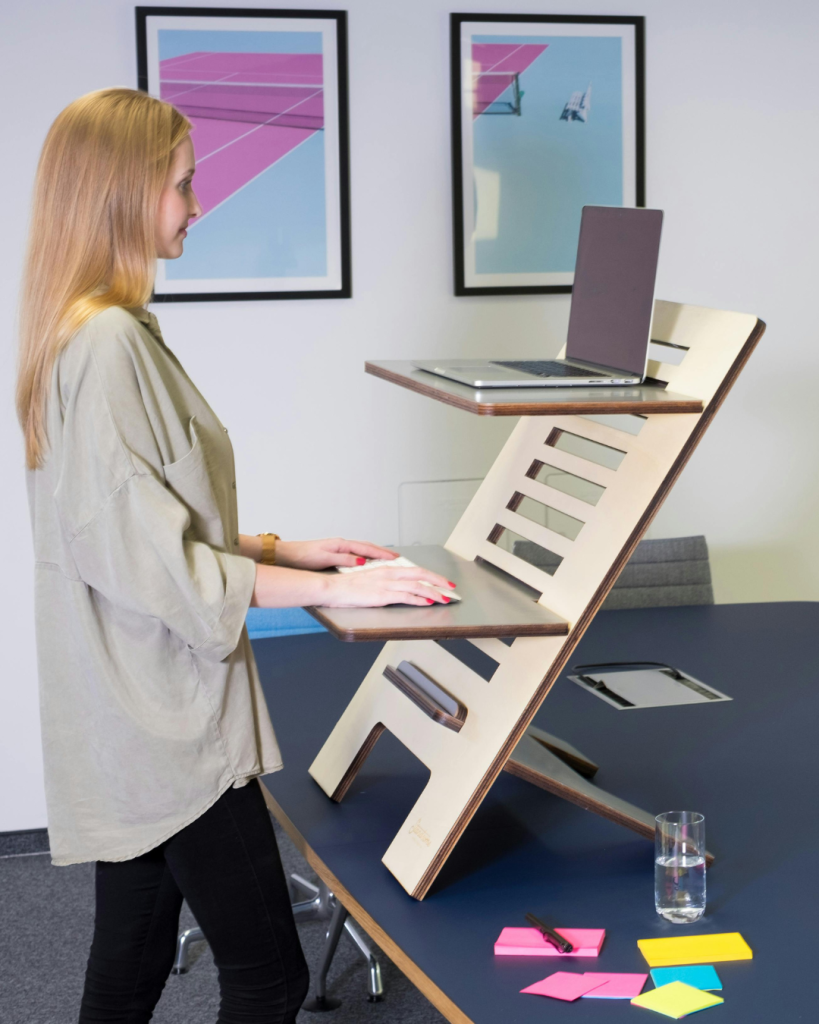
Standing Desks & Spinal Support: How to Use Them Smarter

You’ve probably heard the phrase “sitting is the new smoking”. With many of us spending long hours at our desks, the risks of a sedentary lifestyle are no joke—poor posture, back pain, headaches, and even long-term spinal issues. To combat this, standing desks have become a go-to solution in modern workplaces. But here’s the truth: a standing desk is not a magic fix. The way you use it determines whether it supports your health or silently adds to your discomfort.
At our Caloundra West chiropractic practice, we often see people struggling with posture-related problems linked to their work setup. Standing desks can be a fantastic tool when used correctly, and with a few smart adjustments, you can make your workday far more spine-friendly.
Balance Is the Key: Why Too Much of One Thing Backfires
Just as sitting all day can strain your spine, standing all day isn’t necessarily better. Your body thrives on variety and movement. Switching between sitting and standing every 30 to 60 minutes helps reduce muscle fatigue, improves circulation, and keeps your spine from locking into unhealthy positions.
When standing, avoid habits like locking your knees or leaning into one hip. These small tendencies might feel comfortable in the moment, but over time they can place uneven stress on your lower back and hips. Think of standing as an active position—not just being upright, but engaging your muscles lightly to support alignment.
Setting Up for Success: Ergonomic Essentials
The way your workstation is set up matters more than whether you’re sitting or standing. A few simple ergonomic tweaks can make a big difference:
- Screen height: Your monitor should sit at eye level so your neck remains neutral, not tilted forward or downward.
- Arm position: Keep shoulders relaxed and elbows at about a 90-degree angle, with wrists in a neutral position.
- Foot support: A footrest or small step can give you the option to shift weight between legs and relieve lower back pressure.
- Floor comfort: Supportive footwear or an anti-fatigue mat reduces strain on your feet and joints during standing periods.
These adjustments don’t just protect your spine—they also help prevent fatigue and tension headaches, two of the most common complaints we see in practice. For more advice contact our Aura Chiropractic Clinic.
Movement Matters More Than Furniture
A standing desk can encourage better posture, but it’s not a substitute for movement. Regular breaks are still vital. Try these mini habits throughout your workday:
- Shift your weight side to side while standing.
- Take a quick stretch break every 30 minutes.
- Walk during phone calls or short meetings.
- Incorporate gentle spinal mobility exercises to prevent stiffness.
Think of your desk as just one piece of the puzzle. True spinal health comes from consistent, intentional movement—not just the chair or desk you use.
Be Well Chiropractic Insight: Why Workstation Habits Matter
At our Be well Chiropractic clinic, we specialise in neurostructural corrective chiropractic, which focuses on identifying and correcting underlying shifts in the spine that contribute to pain, poor posture, and reduced function. Many of our patients come in with back or neck pain that’s been aggravated by long hours at a desk.
When combined with proper chiropractic care, smart workstation habits help maintain spinal alignment and support the body’s natural healing process. That’s why we encourage patients to view standing desks not as a cure, but as a tool to complement an overall posture-friendly lifestyle.
Ready to Upgrade Your Workday?
If you’ve been experiencing back pain, stiffness, or fatigue from long hours at your desk, know that it’s not just part of “getting older” or something you have to live with. With the right setup, movement habits, and spinal care, you can feel more energized and supported throughout your day.
If you’d like guidance on making your workspace healthier or want to understand how your spinal alignment might be impacting your comfort, we’d be happy to chat. Book an appointment with us, and let’s make your workday posture-friendly, productive, and pain-free.
